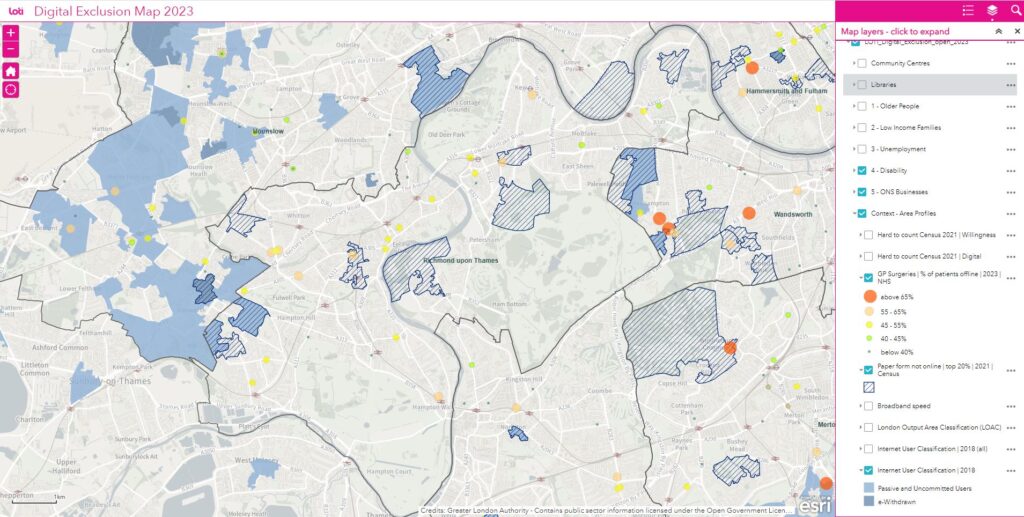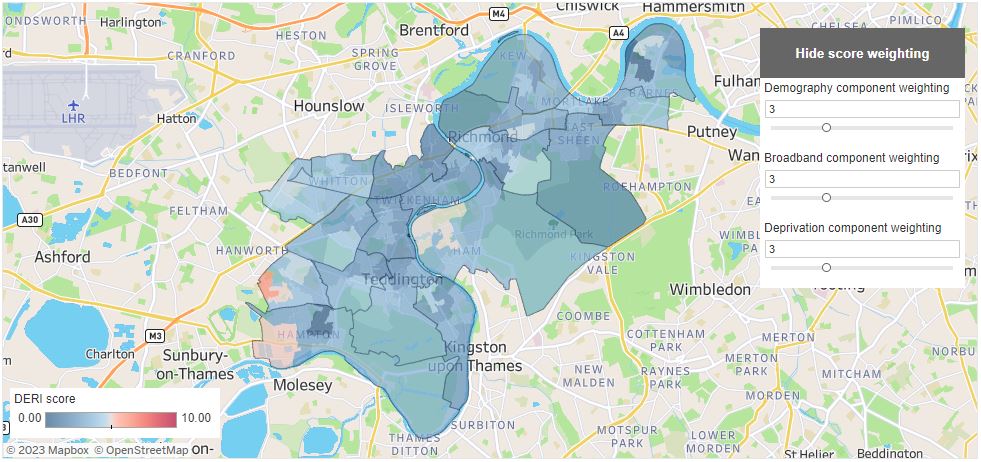Digital exclusion is where members of a population have inadequate access and capacity to use digital technologies that are essential to fully participate in society today.
Digital exclusion spans several areas:
-
-
- The digital skills required to navigate digital devices, access the internet and feel confident online
- Access to digital devices such as laptops, desktop computers, smartphones and tablets that allow users to get online
- Good connectivity that ensures reliable access to the internet through broadband, Wi-Fi and mobile data
-
Barriers to the components above include the affordability of internet services and digital devices, a lack of digital education or training, a lack of motivation to access the internet for those who may not understand the benefits of being online, access issues for those with disabilities, available network infrastructure or a combination of these factors.
The impact of digital exclusion widens as an increasing number of everyday activities and services move online. Despite COVID being a catalyst for some people to develop new digital skills and get online, the accelerated shift of services to online platforms during the COVID pandemic has further exacerbated digital exclusion for some.
For example, the move to online health literacy and services could result in poorer health outcomes and the move to online financial services could result in financial exclusion among the digitally excluded.
Unfortunately, it is those already at a disadvantage – through age, education, income, disability, or unemployment – who are most likely to be impacted.
Data Sources
- Lloyds Essential Digital Skills: 3.0% of Londoners are not able to complete any foundation tasks on the Lloyds Essential Digital Skills survey. A further 11.0% are not able to complete all eight foundation tasks (Lloyds, 2022).
- Internet Users (ONS): 4.5% of people (76,000) in Outer West and North West London had never used the internet, a further 1.2% (20,000) last used it over three months ago (ONS, 2020).
- Digital Propensity Index: The ONS combined Census 2021 online response rates, with modelled predictions to create a comparative measure of digital uptake of the 2021 Census*.
Richmond was within the top thirty Local Authorities nationally on the Census 2021 Digital Propensity Index (likelihood to submit an online census form rather than a paper form) with 95.9% of the borough predicted to submit an online response. This means 4.1% were more likely to submit a paper response – equating to approximately 3,300 households that could be digitally excluded.
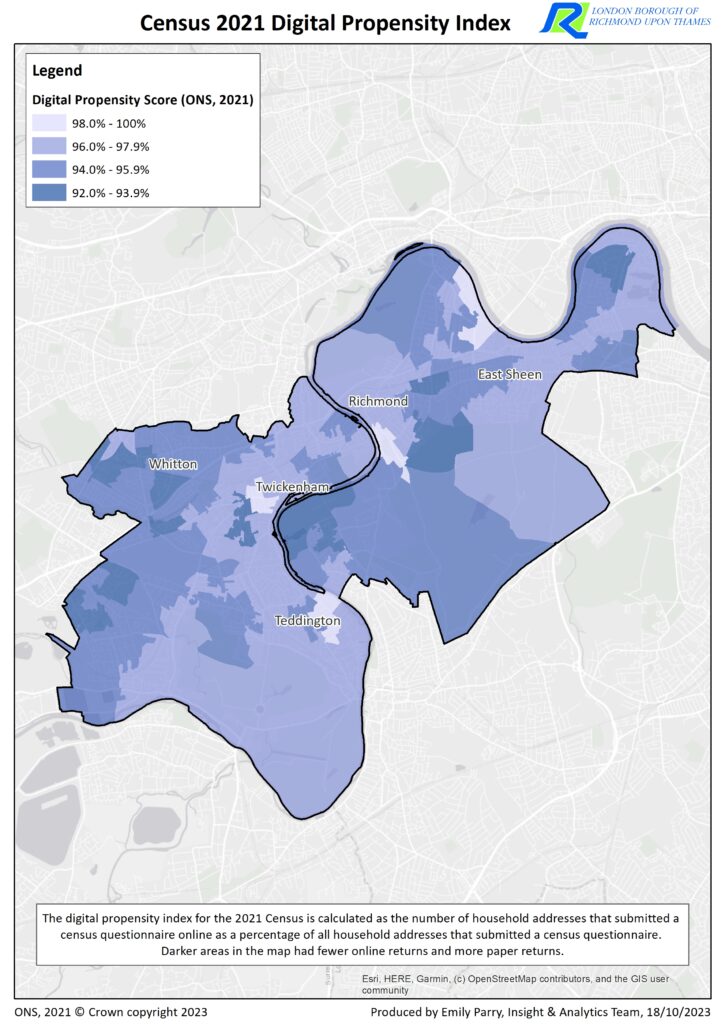
*The Digital Propensity Score is created by taking the Census 2021 online share of returns from online-first LSOAs and taking the modelled Census 2021 online share of returns from paper-first LSOAs, had they been online-first during Census 2021 data collection. The Census 2021 online share of returns is calculated as the number of household addresses within an LSOA that submitted a census questionnaire online as a percentage of all household addresses that submitted a census questionnaire. Where multiple questionnaires were received for a single household address, the mode of the first questionnaire received is used. For the purposes of this publication, questionnaires completed via telephone capture or at census support centres are treated as online returns as they were submitted via the electronic questionnaire.
-
- Internet User Classification: The 2018 Internet User Classification (IUC) is a bespoke classification that describes how people living in different parts of Great Britain interact with the Internet. It offers 10 unique classes of Internet Use and Engagement and this User Guide provides a profile for each of the 10 classes.
- London Digital Exclusion Map: The London Office for Technology and Innovation (LOTI), Greater London Authority (GLA) and some London boroughs have produced an interactive map to help identify areas of digital exclusion across London. Alongside the map, a bank of personas have been created to provide a deeper insight into the user needs of the key digital exclusion group demographics.
- Digital Exclusion Risk Index (DERI): This tool brings together a broad set of indicators to calculate an overall DERI score for each area. The tool allows you to change the relative weightings of the three groups of indicators: demography, deprivation and broadband and therefore the user can change how each component influences the final DERI score.
- Household Acorn: Acorn is a geodemographic segmentation tool that classifies UK households into one of several types based on characteristics and behaviours. The CACI population segmentation data suggests that approximately 10,100 households that could be digitally excluded based on types that are significantly less likely to engage with the internet – these were generally households within an older demographic.
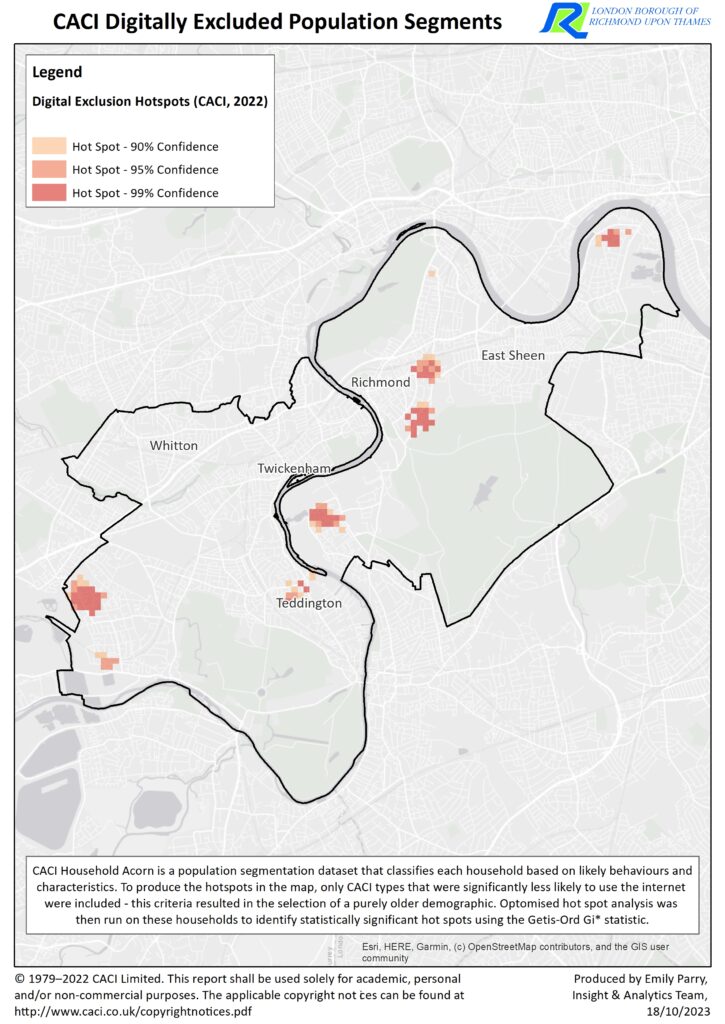
- Offline GP Patients: Patient Online Management Information is available from NHS England, providing information on digital services that GPs make available to patients, including access to records, appointment booking and ordering of repeat prescriptions. With this data it is possible to identify the proportion of patients registered with each GP that are not enabled for any digital services offered by their GP.
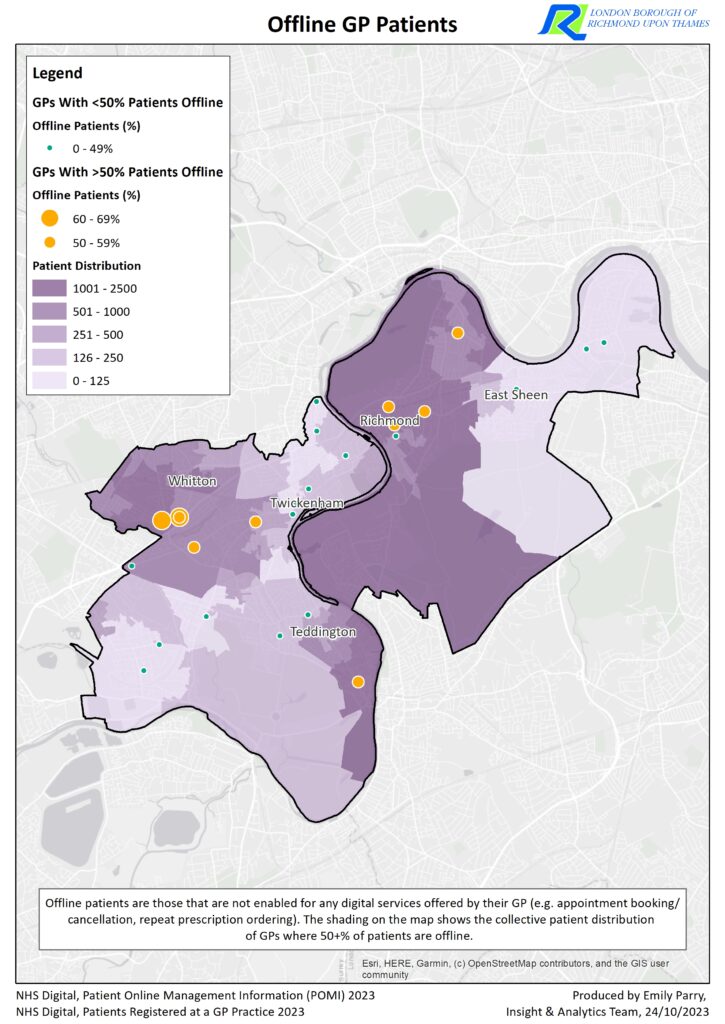
- Broadband Speed and Ultrafast (UFBB) Availability: The average wired broadband download speeds for local addresses (residential and business), and estimates of the proportion with access to (300Mb/s+) service.

